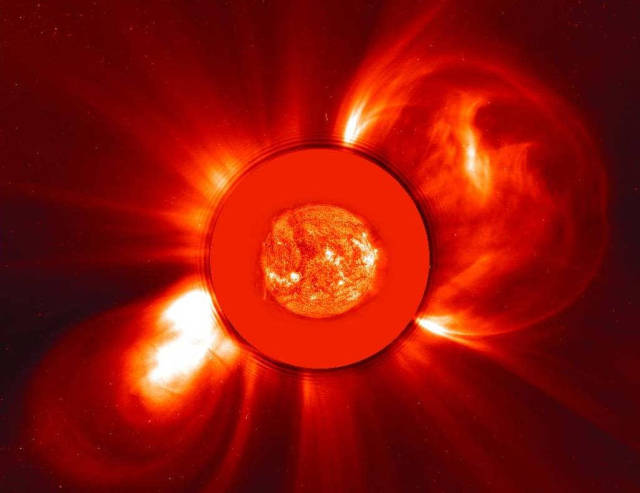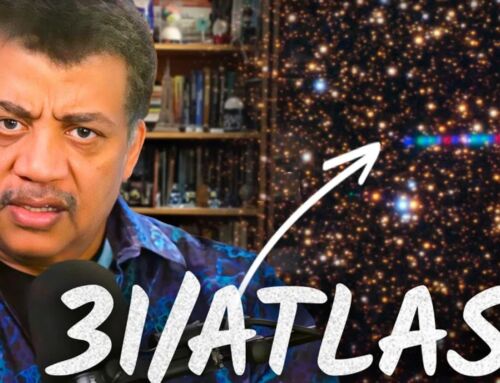After 20 years in space, ESA and NASA’s Solar and Heliospheric Observatory, or SOHO, is still going strong. Watch the video…
Originally launched in 1995 to study the sun and its influence out to the very edges of the solar system, SOHO revolutionized this field of science, known as heliophysics, providing the basis for nearly 5,000 scientific papers. SOHO discovered dynamic solar phenomena such as coronal waves, solar tsunamis and sun quakes, and found an unexpected role as the greatest comet hunter of all time—reaching 3,000 comet discoveries in September 2015.
This “Best of SOHO” image by the observatory’s LASCO C2 coronograph from Nov. 8, 2000, shows what appears to be two coronal mass ejections (CMEs) heading in symmetrically opposite directions from the sun. A 304Å image from SOHO’s Extreme ultraviolet Imaging Telescope (EIT) taken on the same day has been superimposed over the dark disk which blocks the sun so that the LASCO instrument can observe the structures of the corona in visible light. CMEs, which are huge, fast-moving clouds of electrically-charged solar material that contain embedded magnetic fields, can cause geomagnetic storms when they collide with Earth’s magnetic field, causing it to shimmy and shake. The ability to connect the effects of geomagnetic storms—like auroras, GPS and communication disturbances, and geomagnetically induced currents, which can put a strain on power grids—to events on the sun has brought the idea of space weather into the mainstream.
Image Credit: ESA/NASA/SOHO
source NASA






Leave A Comment